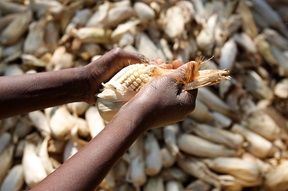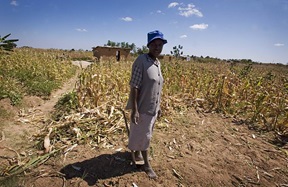The threat to global food security is back. The COVID pandemic has had a huge impact. The UN estimate that as many as 811 million people were undernourished in 2020 – around one in 10. And present changes are not for the better.

We are not on the right track
On the one hand, we will have to feed more mouths. This is pressing especially in sub-Saharan Africa, where population is supposed to double by 2050 from 1 to 2 billion. As a whole, in 2050 the world will probably have to feed 2 billion more people than today. But as the UN Food and Agricultural Organisation stated recently: ‘after decades of long decline, the number of people suffering from hunger has been slowly increasing since 2014.’ Not only will we have to feed more people, the diet of mankind changes. In total, in 2050 the demand for food will probably be 56% higher than in 2010.
The United Nations formulated as its goal for 2030 to end hunger and achieve food security and improved nutrition for all. It may be clear: we are not likely to reach this goal. For on top of a gradually increasing number of undernourished people, we will have to take into account the effects of climate change. Agriculture needs to become greener and more productive, fast. Easier said than done. For delivering enough food to people touches about practically all aspects of an economy and society.

Global agricultural problems
The World Economic Forum mentions the following problems that we need to address.
1. Population growth. This is a pressing problem in many developing countries with a still growing population. Moreover, urbanization increases, so we can expect 2.5 billion additional urban residents in Africa and Asia by 2050.
2. Changing tastes. Diets are changing. People get wealthier and then increasingly shift to diets that require more land to produce them, particularly because these diets contain more meat and dairy.
3. Climate change, already mentioned. Currently, 40% of the world’s landmass is arid. Temperatures rise, and will turn yet more land into desert. At the current rate of change, the world will produce in 2050 just half of the amount of food required to feed its population.
4. Water scarcity. This is a problem already in many areas, notably because of climate change. The World Resources Institute wrote in 2013 already that ‘one-quarter of world’s agriculture grows in highly water-stressed areas.’ Another article warns us that ‘world population facing water stress could double by 2050 as climate warms.’
5. Troubled farmers. Fewer people choose farming as an occupation. This adds to other agricultural problems. Like the loss of arable land by urban sprawl and soil degradation because of over-farming.
Technological improvements may come to the rescue
The conclusion might be: we need more land to produce more food. But the amount of arable land is limited. In fact, mankind has already taken into use the most productive grounds. The Western diet isn’t of much help either. Meat consumption requires a lot of land. All things remaining the same, within thirty years we might need at least 70% more land – that isn’t there. If we keep on growing in wealth, technological improvement is the only factor between us and a global food problem.
Fortunately, such improvements, including mechanisation and the use of fertilizers and pesticides, have so far come to our rescue. As we made use of these improvements, the average area of land required to feed one person fell from 2650 m2 around 1960 to about 1700 m2 now. Whereas on the other hand, the available calories per person have increased from 2250 to 2750 per day. According to a study by Sanderine Nonhebel of Groningen University.
Will these such improvements continue, and be sufficient for feeding the world? It is too early to tell. But the future looks quite uncertain.
Interesting? Then also read:
Food and water as geopolitical assets
The disruption of the cow
The microbial food revolution
